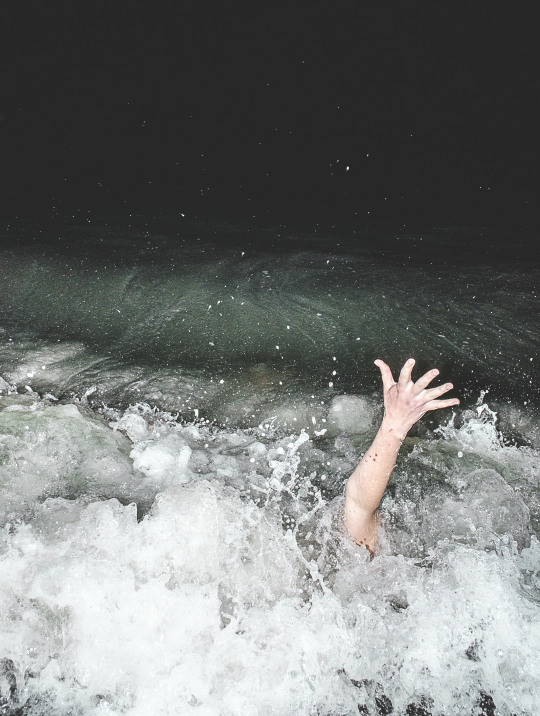#finn schult
Text
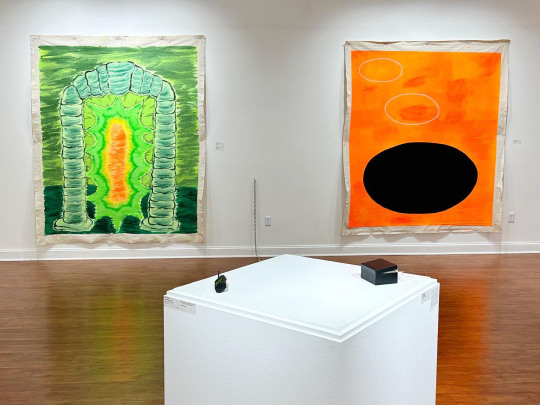
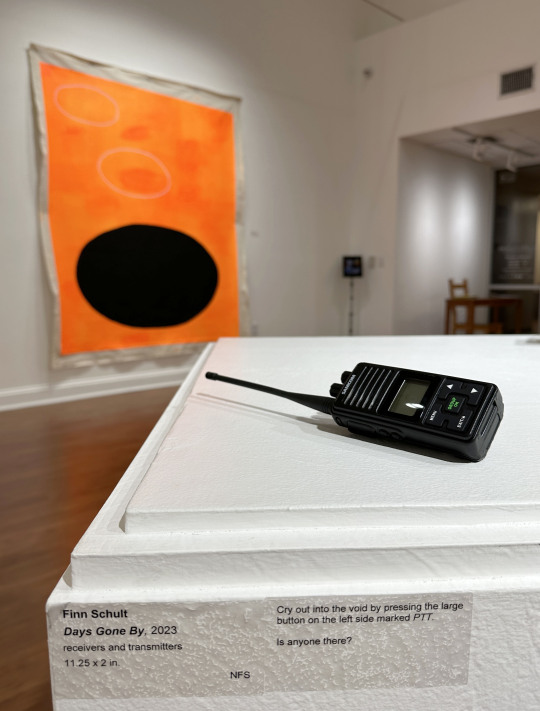

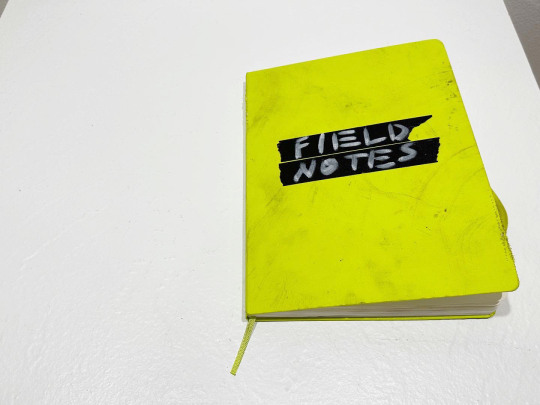
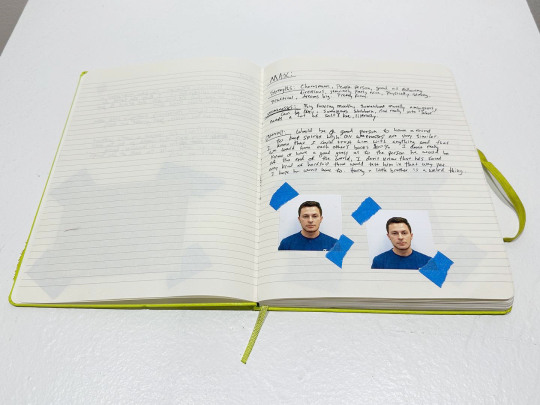

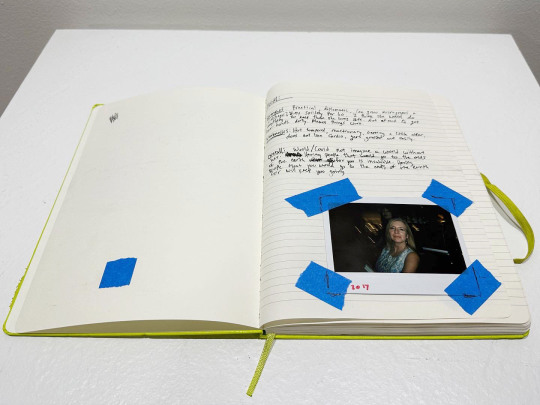

These days it's hard not to think sometimes about the end of the world. But have you started putting together a plan? Thought about who would be good in a crisis? Put together a pros and cons list of your friends, family and acquaintances? Wondered if things would actually be better?
Finn Schult's current exhibition Everything You've Ever Wanted at Gallery 114 at Hillsborough Community College's Ybor City location, presents an interesting take on the current state of things for those with the end on their minds. It includes paintings, animal traps, an ipod and walkie talkie, as well as a book containing photos, prepper information, journal entries, drawings, and some pros and cons for the people in his life, including his mom. The paintings are titled "L'appel Du Vide" a French phrase meaning "the call of the void" or the urge to jump when you are standing in a high place.
From the gallery's website-
Everything You’ve Ever Wanted is a solo exhibition of new work by Finn Schult (b. 1993, Naples, FL) reflecting on the inevitability of the end of the world and the fantasy of apocalypse as catalyst for utopia. Schult’s multimedia series exists as fragments, sketches and interludes distilled from an otherwise deranged web of theories. At times, the artworks presented in Gallery114@HCC feel terroristic, violent and unbearably bleak–at other times, they remind us of the beauty inherent in loss, longing and love. Schult’s work yearns for a world that doesn’t yet exist and mourns for a world that isn’t yet gone, answering the cry, “How will I ever get out of this labyrinth?” with “The only way out is through.”
There is also a video in the exhibition, Where r u rn? which mixes a variety of imagery with a bit of author and mystic Terence McKenna's 1999 final interview where he discusses "the fire in the madhouse at the end of time"- the possibility of the craziness in the world being a sign of the dying of our species.
This exhibition closes on 6/22/23.
#finn schult#gallery 114 at HCC#tampa art shows#florida artist#ybor city art shows#art#art shows#apocalypse#end of the world#l'appel du vide#sculpture#art installation#painting#journals#video and film#terence mckenna
0 notes
Text
Recapping Chapters 71 - 75
Day One:
The second year attendees are taken on a tour of the estate by Sébastien Vayssière, and they are left at their dormitories to unpack and introduce themselves to each other. Harry speaks with Blaise outside of their rooms, and things are a bit tense between the two boys. Finn Vogel interrupts, behaving coldly towards Blaise, who quickly retreats to the Altomare room.
Harry meets his roommates; Hugo Laurent, Noah Schulte, Arie Driessen, and Liam Graf. Hugo admits he was asked by his family to keep an eye out for Harry this week, and he warns Harry about tensions between certain families. Harry learns more about how the Altomares supported Grindelwald during the war, and he is warned to stay away from the Altomare sponsored attendees. When he pushes to understand why they are so dangerous, Harry is told the Altomares practice necromancy.
Harry learns that the Altomares have a special arrangement with the Italian government, where members of the family are exempt from the laws prohibiting necromancy. The Altomares do not share the knowledge of how to practice necromancy, and they are the only individuals known to practice necromancy in Europe.
After unpacking, the second year attendees are taken to an introductory session to get to know one another. Once the icebreaker session is complete, the attendees are invited to put down their names for workshops for the week ahead. Harry joins his roommates back in their dormitory to select workshops.
Later after dinner, Harry and Daphne slip away to talk, and Harry tells her about the Altomare family practicing necromancy, and the interaction with Blaise. They also talk about Daphne’s decision to remain at Hogwarts, in spite of her wanting to attend Durmstrang.
Day Two:
Harry attends the Alchemy workshop with Arie. He realises how well-positioned he is for the practice of alchemy, given he is capable of wandless magic. They are transmuting ammonia hydroxide into water, and at the end of the workshop, Harry has created something that looks like water but seems to resonate with magic. When his solution is tested, the assistant seems bewildered and a little worried, getting the instructor Ms Hansen to come over. After examining Harry’s solution, Ms Hansen asks him to stay behind to talk.
Once alone, Ms Hansen reveals Harry accidentally created a restricted substance known as concentrated magic. The substance temporarily increases a person’s power when consumed, but it is restricted because of how dangerous it is. She also warns Harry in general that he has the potential to be a great alchemist one day, but his path will be perilous until he learns to hone his magic. It is implied that Ms Hansen suspects Harry to be capable of wandless magic, but she does not interrogate him about it, respecting his privacy.
After the Alchemy workshop, Harry attends the Curse-Breaking workshop with Daphne. They learn how to detect curses in a series of educative and fun exercises. Harry works out the trick to the final task, but runs out of time to complete the test.
That evening, the Battenberg sponsored second years enjoy an evening together on the grounds. Harry gets to know everyone a little better, and he learns Finn is considered the best duellist of his year level at Durmstrang.
Day Three:
Harry and Daphne attend the first part of the Wandcraft workshop in the morning. At first, Harry is excited because he believes their instructor, Madam Alarie, might be capable of wandless magic like him. However, he quickly learns she cannot do wandless magic, but rather the technique she uses to examine wands is a form of ritual magic that does not require a wand. Harry learns he should not work with holly wood in the workshop, because his wand has a possessive nature. Instead, he chooses to work with yew wood, having been drawn to study it after learning Voldemort’s wand was made of yew. He selects thestral hair for the core, and the materials are set aside to be crafted together on Saturday at the next workshop.
After lunch, Harry heads to the Duelling workshop with Daphne and his roommates. Their instructor, Mr Gaudreau, asks for a volunteer to challenge for the first duel, and Finn raises his hand. He immediately challenges Harry to a duel.
During the duel, Harry uses his control over his magic to enhance his spells beyond what he would otherwise be capable of. At the end of the duel, he sends Finn flying, and is concerned he has hurt the other boy based on how hard he landed. Harry’s hesitation costs him the duel, allowing Finn to grab his wand again and win the duel.
Later, Harry watches Daphne and Liam duel, and he observes Liam’s unusual but effective techniques. He learns that Liam is in the top five duellists in their age group at Durmstrang.
Day Four:
Harry attends the Quidditch workshop with Karl, who put down the same session as Harry. He is introduced to one of Karl’s friends, Viktor Krum. Harry faces off against Viktor in the workshop, and although he loses the Snitch to Viktor, the other boy is impressed at the way Harry flew.
Lunch is served that day outside, and Harry talks with Karl and his group of friends. They are approached by an individual who introduces themselves as Mischa Drozdova. Harry learns that Mischa’s family is one of the few in the world to carry the Metamorphmagi ability, and that Mischa has the ability. The two speak privately, and Mischa explains they knew Harry was a Metamorphmagi, because a couple of years ago their father was approached concerning a request for support for a new Metamorphmagus - Harry Potter. Mischa’s father sent the intermediary away to get more information and establish contact with the Blacks, but they never heard back from the intermediary. They assumed the Blacks no longer wanted their assistance. Harry informs Mischa that they never heard back from the intermediary either, and it seems that person let down both families.
Mischa offers to talk with their father about offering training to Harry and Dora too. They also discuss that Mischa uses they and them pronouns, and that they can maintain their Metamorphmagi transformations without consciously thinking about it. Harry asks if Mischa’s family have a theory why some people inherit hereditary magical abilities, and others don’t, and Mischa shares that their family believe magic itself chooses the person to inherit an ability. For what purpose, it is unclear, but Mischa’s family believes magic has a reason for selecting the people it does.
Harry and Daphne head to the Runesmith workshop, and while they are standing outside to be let in, they encounter a girl who instantly captivates everyone present. Harry’s magic warns him that there is something off about the girl, and he able to break free of her influence to realise she is emitting a strange sort of magic across everyone. He is able to free Daphne of her influence too, by covering his friend with his magic and pushing the girl’s influence away. Harry realises the girl does not seem to be able to control herself, and she is not doing it on purpose.
In the Runecraft workshop, Harry and Daphne are assessed by the instructor, who is unable to place either of them in the class due to their inexperience. She assigns them to shadow advanced students, so the workshop is not a total waste of time. Harry ends up shadowing the girl, who is rude and dismissive of him. When he gets angry at her, she seems strangely shocked and then calculating. Harry realises she is used to people fawning over her, no matter how she treats them — she can tell Harry is somehow unaffected by her.
She warms up to Harry after that, introducing herself as Fleur Delacour and guiding Harry through her process in runesmithing.
After the workshop, Daphne is angry and upset at the fact she and Harry are so far behind. In particular, Daphne feels let down by her mother, who is a Runes Mistress. Daphne feels strongly that her parents have not done enough for she and Harry, and she wants to confront them that evening, with Harry.
Harry does not feel the same way at all, and is reluctant to accompany Daphne to have that conversation. The two have a disagreement, and part ways. Harry talks to Sirius, and gets some advice from his godfather. He also tells Sirius about Mischa’s offer to talk to their father about training Harry. Sirius is hesitantly interested in the possibility of Harry being trained, but is not keen on him going to Russia as Mischa suggested.
Later that evening, Harry discusses what electives he should pick for Durmstrang with his roommates. He is warned about the professor who teaches the Mind Arts; Professor Sylvan. They discuss how Duelling students who are thirteen and above can compete in the International Youth Duelling Competition, which is held in April each year. Schools can only send twenty students to compete; ten in the junior division (13-15) and ten in the senior (16 -17).
Day Five:
Harry and Daphne make amends with one another, both apologising to the other for the disagreement. Daphne shares that her mother Rosie is going to design a runecraft intensive program for the rest of summer to catch Daphne up, and Harry is invited to attend too.
Mischa meets Harry for breakfast, and the teenager confirms their father is happy to train Harry and Dora, but he would like to meet them both. They plan a meeting in Paris in a couple of days before Harry goes home to Britain. Mischa explains the reason they suggested Harry train in Russia, is because it is very hard for foreigners to get an International Portkey to Britain.
After breakfast, Harry attends the Duelling workshop for the second time, with Liam. They spot Kasia and Malina, and Harry learns that Liam and the girls know each other, and that there is a rivalry between Kasia and Liam.
Kasia’s uncle is a professional duellist, who has trained her this summer, and Harry sees her win her duel against Malina using an advanced move to get around Malina’s Shield Charm. When Harry duels against Liam, he experiences Liam using his Shield Charm offensively, allowing him to take Harry out.
That afternoon, Harry has his Psychometry workshop. He recognises the surname of his instructor, Étienne Agard, and realises the man might be related to one of Harry’s ancestors, Edith Agard. She was the mother of Rhiannon Gaunt, who brought Bloodbane into the Black family.
Harry conducts a successful psychometry ritual, and Étienne invites Harry to stay after class if he has any questions or he wants to learn more. While waiting for everyone to have their turn at the ritual, Harry observes another boy walk over to him and correctly match his item to Harry. The other boy seems interested in Harry, and when the workshop finishes, he comes over to talk.
The boy’s name is Dion Lykaios, and he is a member of the Greek family who hold a seat on the council of the Dark Alliance. The two boys chat about divination, history, and tradition, and Harry learns that Morgana is a household name in Europe. He and Dion exchange mailing addresses, and Dion encourages Harry to come visit Greece and let him show Harry around.
Harry talks to Étienne about self-teaching divination, and Harry also brings up the Agard connection. Étienne confirms his family had British relatives, but they dwindled in size and have since died out. Harry shares that his Agard ancestor suffered from an illness, that she passed onto her daughter, and then from the daughter entered the Black family line. Étienne identifies the illness Harry is referring to — Bloodbane. He explains that whilst no one in his family suffer from it, that his British relatives did have it.
Harry asks Étienne if he knows where the Bloodbane came from, and if his family have a theory why one side were unaffected and the other had the disease. Étienne is not sure where Bloodbane came from — but his family believe it was the British Agard’s inbreeding that triggered the development of the disease.
That evening after dinner, Harry spends time with the other Battenberg sponsored attendees. In particular, he talks with Daphne’s roommates, Ella Dietrich, Adele Pasche and Danijela čukić. He shares that he plans on selecting Runecraft, Alchemy and the Mind Arts for his electives. Harry is again warned about the Mind Arts teacher, Professor Sylvan. He also learns that Daphne’s Uncle Ezra is very popular as Durmstrang’s Transfiguration teacher.
15 notes
·
View notes
Text
#FollowFriday Five: You Have Nothing to Worry About
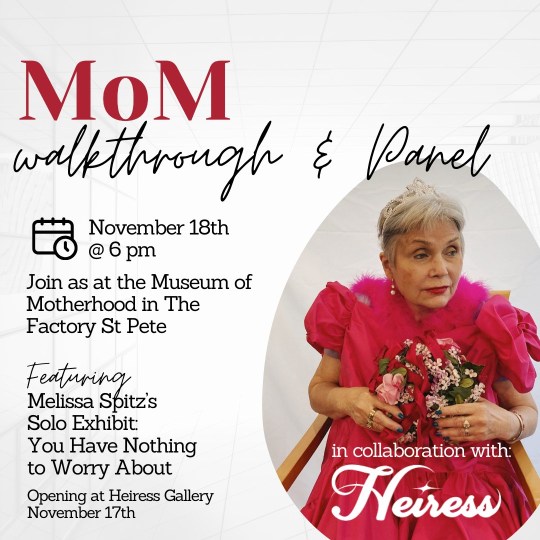
This week’s #FollowFriday Five is inspired by a new exhibition opening this weekend at Erica Luedtke and Finn Schult’s Heiress Gallery (@heiress.gallery) in The Factory St. Pete (@thefactorystpete). Heiress showcases images from NYC-based photographer Melissa Spitz, Time Magazine’s (@time) Instagram Photographer of the Year in 2017. Spitz’s “You Have Nothing to Worry About” (@nothing_to_worry_about), at Heiress throughDec. 30, features Spitz’s mother, who is mentally ill and struggles with addiction. There’s an opening reception for the exhibition tonight, 6-9 p.m. On Saturday evening, Nov. 17, 6-9 p.m., Heiress pairs an artist discussion with a walkthrough of the Museum of Motherhood next door (@museumofmotherhood).
Further Reading:
To learn more about Spitz and her “You Have Nothing to Worry About” series, check out her 2018 TED talk.
Maggy Duffy introduces the Museum of Motherhood in her May 2023 feature for the Tampa Bay Times.
Duffy introduces Heiress Gallery in this Feb. 2023 Tampa Bay Times feature.
0 notes
Photo
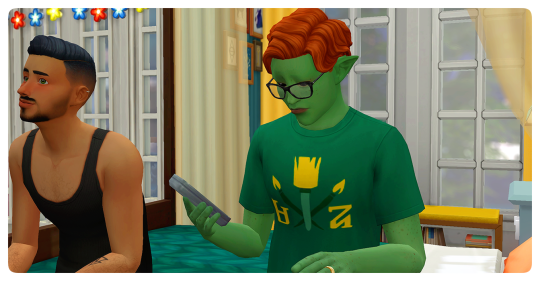

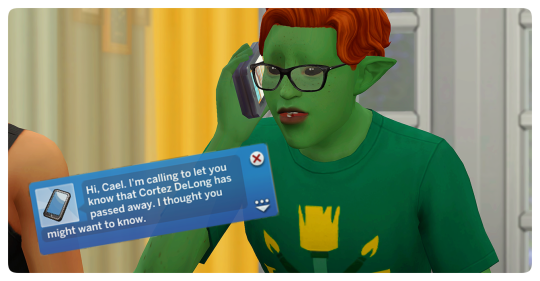
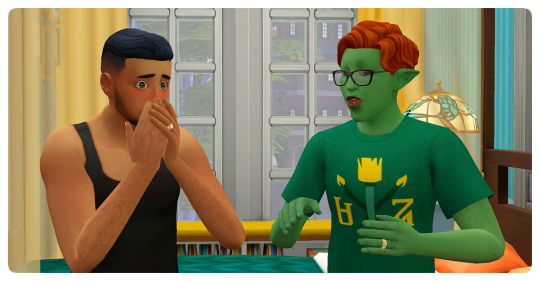
But the romantic moment was interrupted by Cael’s phone ringing. It was Salomé, who informed Cael that his mentor in Selvadorada, Professor Schulte (who apparently has found love and a new last name since we last saw him), has passed away.
Cael: ....and the funeral is tomorrow. Dan and I have to go...But don’t worry I promise we will be back before Finn’s birthday.
105 notes
·
View notes
Text
Virtual Panel: At the Crossroads of Art and the Artes
Excited to be speaking on the upcoming virtual panel, 'At the Crossroads of Art and the Artes' organized and hosted by Finn Schult for the curatorial part of his residency at Dark Room Oracle—"folk magic in the virtual realm"(!)—in Michigan. The panel streams today, October 2nd, at 10 am PST. Watch live at https://meet.google.com/snw-ycwd-ohn

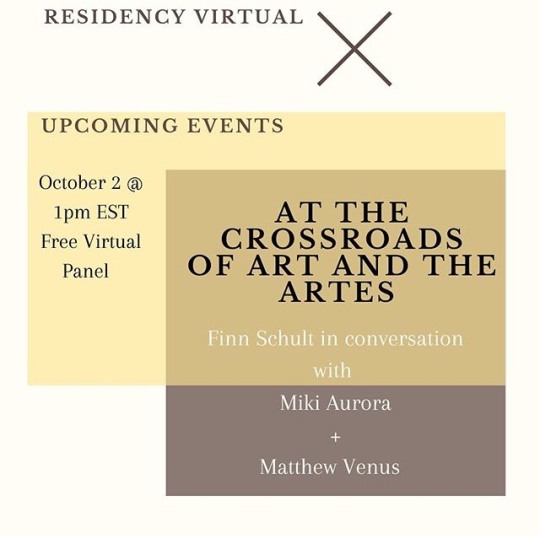
0 notes
Note
Hey! Could you please list some german names and surnames?
i’m really sorry that it’s taken me so long to get to this. your message kind of got lost in my inbox, but i hope those names are going to be useful to you!! since you didn’t specify if you want male or female names i’m just going to list some for each gender.
as for female names: emma, michaela, katharina, lena, anna, romy, tanja, leonie, lili, lisa, lara, maria, andrea, laura, emma, julia, linda, annett, annika, tina, saskia, louisa, ramona, michelle, verena, anni, doro, diana, elisabeth, frida, lotte, ida, ilona, miriam, nina, mia, pia, yvonne, rita, sina, ruth, lara, paula, peggy, nele, natalie, miriam and romina.
as for male names: finn, paul, hauke, mattheo, nils, gunnar, jan, sven, thomas, markus, johannes, karl, josef, mats, helge, uwe, jens, martin, richard, malte, hannes, lennard, henri, hugo, matti, matthias, damian, gustav, linus, thorben, georg, leonard, joel, anton, noel, felix, nicklas, yannik, kevin, theo, milan, dustin, hendrik, lars, thias, enno, oskar, bruno, laurenz, jan, fabian and tim.
and surnames: müller, schmidt, schneider, fischer, koch, weber, meyer, wagner, leicht, richter, klein, wolf, schäfer, schröder, neumann, schwarz, krüfer, hartmann, hofmann, brüggemann, werner, krause, meier, lehmann, huber, kaiser, sommer, hahn, schubert, vogel, friedrich, schuster, stein, jäger, otto, graf, schulte, kühn, busch, berger and sauer.

93 notes
·
View notes
Link
Lecker #Finne aus #Münster 😋 pic.twitter.com/6paqW8HVVW
— Klaus Schulte (@ProfDrKSchulte) May 9, 2020
0 notes
Text
AWS - Bejutottak az Eurovízós Dalfesztivál szombati döntőjébe!
AWS - Bejutottak az Eurovízós Dalfesztivál szombati döntőjébe! - http://metalindex.hu/2018/05/11/aws-bejutottak-az-eurovizos-dalfesztival-szombati-dontojebe/ -
Tegnap eljött az Eurovízós Dalfesztivál második elődöntője, 23 óra után kiderült, hogy továbbjutott a magyar AWS zenekar a szombati fináléba. Magyarország területéről nem lehetett szavazni a magyar versenydalra, ahogy más országok sem voksolhattak a sajátjukra. Rockbanda sem volt sok a mezőnyben, az AWS pedig nagyon odatette magát, az európai rockerek és metalosok pedig beszavazták őket a döntőbe.
Továbbjutott Szerbia, Moldova, és a harmadik helyen kimondták Magyarországot, továbbá ott lesz még szombaton Ukrajna, Svédország, Ausztrália (sztárvendégként), Norvégia, Dánia, Szlovénia és Hollandia. Folytatás szombat este…
Gratulálunk!
A Magyarországot képviselő, modern metal zenekar a verseny második elődöntőjében a 18 előadóból a tíz legjobb közé került a szakmai pontok és a közönségszavazatok kombinációja alapján kialakult összesítésben, így lett a 26-os döntő résztvevője.
A Duna Televízióban a helyszínről élőben közvetített elődöntőben az AWS tizenharmadikként került sorra és nagy sikert aratott. A mezítláb színpadra lépett énekes, Siklósi Örs és vokálozó társai jól előadták a dalt. A csapatban Brucker Bence és Kökényes Dániel gitározik, Schiszler Soma basszusgitározik, Veress Áron pedig dobol, őket Schwartz Dávid vokalista egészítette ki. A Viszlát nyár a zenekari tagok szerzeménye, a dal a halál kémiájáról, megértéséről, tágabb értelemben szeretteink elvesztéséről szól, Siklósi Örs egy éve elhunyt édesapja emlékének íródott.
Ugyancsak bekerült a fináléba az idén is az esélyesek között emlegetett 2009-es győztes, a norvég Alexander Rybak (számának címe: That’s How You Write a Song), ő az Eurovíziók történetének 1500. dalát adta elő. Sikerrel kvalifikálta magát továbbá a svéd Benjamin Ingrosso (Dance You Off), a moldovai DoReDoS (My Lucky Day), az ausztrál Jessica Mauboy (We Got Love), a dán Rasmussen (Higher Ground), az ukrán Melovin (Under the Ladder), a holland Waylon, aki 2014-ben második lett a versenyen a Common Linnets zenekarral (Outlaw in ’em), a szerb Sanja Ilic & Balkanika (Nova deca), valamint a szlovén Lea Sirk (Hvala, ne!).
A keddi első elődöntőből az albán Eugent Bushpepa a Mall című dallal, a cseh Mikolas Josef (Lie to Me), a litván Ieva Zasimauskaité (When We’re Old), az izraeli Netta (Toy), az észt Elina Nechayeva (La Forza), a bolgár Equinox (Bones), az osztrák Cesár Sampson (Nobody But You), a finn Saara Aalto (Monsters), az ír Ryan O’Shaughnessy (Together), valamint a ciprusi Eleni Foureira (Fuego) jutott a szombati döntőbe. A 26-es finálénak kiemeltként tagja az Egyesült Királyság (SuRie – dalának címe: Storm), Franciaország (Madame Monsieur – Mercy), Olaszország (Ermal Meta & Fabrizio Moro – Non mi avete fatto niente), a házigazda, tavalyi győztes Portugália (Cláudia Pascoal – O jardim), Spanyolország (Amaia & Alfred – Tu canción) és Németország (Michael Schulte – You Let Me Walk Alone).
A csütörtöki 18 elődöntősből a tíz továbbjutót úgy választották ki, hogy egyrészt az érintett országok, valamint a kiemeltként eleve döntősök közül Németország, Franciaország és Olaszország részéről pontozott egy ötfős szakmai zsűri, másrészt az utolsó dal elhangzása után negyed órán keresztül a tévénézők szavazhattak a verseny applikációján, telefonon és/vagy sms-ben. A kettő kombinációja alapján dőlt el a tíz továbbjutó produkció. Az egyes országok szavazói nem voksolhatnak saját fellépőjükre.
Az AWS azzal vívta ki a jogot az Eurovíziós Dalfesztiválon való részvételre, hogy februárban megnyerte a magyarországi válogatóversenyt, A Dalt.
Az idén All Aboard! (Mindenki a fedélzetre!) szlogennel zajló dalfesztivál döntőjét szombaton rendezik, amelyet a Duna Televízió 21 órától élőben közvetít.
(MTI)
0 notes
Text
Ethnomedicine The search for medicinal plants has been an integral part of human society since the earliest recorded history. Some plants were used for food and others for medicine. In several cases, humans discovered multiple uses for the same plant. Plants used, as food can also be considered medicinal, as many fruits and vegetables contain many beneficial compounds (e.g. anti-oxidant in citrus fruits). Some plants were used to relieve pain and others (e.g. Cannabis sativa L . , Cannabaceae, called kif or hashis in Morocco; and Papaver somniferum L . (opium), Papaveraceae, Table 1.1) had psychoactive properties. It is worth mentioning the present debate (Randall, 1991) about marijuana's use to relieve pain for patients suffering from cancer or AIDS. Chinese monks used green tea, an excellent source of the stimulant caffeine, to stay awake and increase mental awareness. Furthermore, some plants were avoided or used as poisons, e.g. poison hemlock (Conium maculatum L. (hemlock), Apiaceae) with which Socrates was poisoned. Some poisons are useful; for example, curare is used as anesthetic. Other plants were considered sacred and were worshipped like the lotus flower and also Nigella sativa L. , Ranunculaceae, which is considered a blessed and sacred plant in North Africa and the Middle East. The sacred plants may also be considered medicinal in the context of psychosomatic diseases. 2 After food plants, the most beneficial ones were and are still the medicinal plants used to relieve pains, cure diseases, block the spread of epidemics, etc. Thus, the flowering plants are our main sources of food crops, timber, fibers, vegetable oils, gums, herbs, spices, flavorings, drugs, stimulants, and narcotics. They also adorn our parks, gardens, streets, and other public places as trees, shrubs, and flowers. Medicinal plants discovered by traditional societies are proving to be an important source of potentially therapeutic drugs. Such appreciation has emerged in part because of recent discoveries made by a small but growing group of ethnobotanists who study the relationships between plants and people. Fieldwork exploring the medicinal uses of plants by indigenous peoples in remote parts of the world, coupled with the introduction of sophisticated assays to determine whether plants exert a biological effect, has facilitated the discovery of bioactive molecules made by medicinal plants. Some of these molecules show promise as possible therapies for a range of diseases, including AIDS and cancer. The drug development process is a long and arduous one, designed to ensure that therapeutics released to market are effective and safe. It can thus take many years for a substance to become commercially available as a drug. Until the 1950s, almost all-pharmaceutical research relied heavily on vascular plants as sources of medicines (Cox, 1994). Flowering plants and ferns (as opposed to microscopic organisms and fungi) have given rise to more than 120 commercially sold drugs and account for more than 25 percent of all prescriptions issued every year in North America (Cox, 1994). Many are now synthesized in the laboratory, but others are still isolated from plants. Studying indigenous uses has generated much knowledge about drugs in plants. Plants have been a rich source of medicines because they produce a host of bioactive molecules, most of 3 which probably evolved as chemical defenses against predation or infection (Cox, 1994). In the late 1970s, several groups of scientists independently set off to different corners of the world for the express purpose of finding new drugs through ethnobotanical research, e.g. Finn Sandberg, Lars Bohlin and Gunnar Samuelsson, University of Uppsala; Richard Evans Schultes of Harvard University (Cox and Balick, 1994). It is estimated that 250,000 flowering species grace the earth (Heywood, 1993). Of these, less than half of 1 percent have been studied exhaustively for their chemical composition and medicinal value. Cox and Banack (1991) found that 86 percent of the plants used by Samoan healers displayed significant biological activity in a variety of assays. Balick and Arvigo (1993) and Balick et al. (1994), discovered that crude extracts of the plants that one healer considered to be the most powerful gave rise to four times as many positive results in a preliminary laboratory test for activity against HIV than did specimens collected randomly. However, few of the compounds exhibiting activity in laboratory tests ever prove to be useful new drugs. Some will turn out to be identical to, or less potent than, existing agents are, others will prove too toxic for commercial use
https://open.library.ubc.ca/cIRcle/collections/ubctheses/831/items/1.0099685
0 notes
Text
Pia Sundhage fick som hon ville: “Skulle matchen sluta 0-0 så är det inte så dumt för oss, medan tyskorna i någon mening gärna vill sätta en stämpel på den matchen och gå vidare,” sa hon till Fotbollskanalen så sent som i förrgår.
Det var inte oväntat en mycket bra defensiv prestation av det svenska laget. Jämfört med OS-finalen där man spelade en “öppen” match som resulterade i tysk seger så försökte Sverige stänga alla ytor för tyskt offensivspel och lyckades rätt så bra med det. De tre lagdelarna höll ihop som en försvarsmaskin och backlinjen, mittfältet och anfallet rörde sig som dragen av ett snöre. Mandy Islacker som fick ersätta Svenja Huth redan i den första halvleken sprang många gånger i offside. Det var dock ändå hon som hade matchens klart största chans.
Dzsenifer Marozsan som blev vald till matchens lirare av UEFA drog till ett hård skott som Islacker lyckades styra mot målet, men Hedvig Lindahl räddade med en fantastisk reflex det oavgjorda resultatet.
På andra sidan var det inbytta Stina Blackstenius som kom in för en ganska osynlig Fridolina Rolfö som hade Sveriges bästa möjlighet, men behindrat av Josephine Henning på gränsen till frispark räddade Tysklands målvakt Almuth Schult.
I den andra halvleken var Tyskland närmare att spräcka den svenska nollan. Steffi Jones bytte även Anja Mittag rätt tidigt och gav Hasret Kayikci chansen. Dussintals instick försökte tyskorna, men Sveriges försvarsinsats som påminde om OS i Rio var i det närmaste felfritt. Nilla Fischer och Linda Sembrant gjorde en stormatch. Rätt så blekt var Lisa Dahlkvist och Rolfö, Olivia Schough som fick lämna planen skadad (lårkaka?) gjorde fram till dess en dålig match.
När man inte har ett nämnvärt offensivt spel och satsar endast på långbollar mot snabba forwards måste man vara bra vid fasta situationer. Schough la fem svenska hörnor, den ena värre än den andra. June Pedersen brukar göra varje hörna i Damallsvenskan till en het målchans. Tyvärr har Pedersen fel pass, men i Magdalena Eriksson har Sverige en hörn- och frisparksläggare av klass. “Magda” fick dock endast fyra minuter plus tillägg. En del bedömare trodde att bytet mot fd LFC-lagkamraten Jonna Andersson var symbolisk och kan betyda att Eriksson får spela nästa match. Så enkelt är det dock inte. Om Olivia Schough är fit for fight ser vi troligtvis samma startelva som mot Tyskland även mot Ryssland. En liten chans finns att Blackstenius går in för Rolfö. Lotta Schelin som enligt tränaren ska få spela alla matcher till fullo under EM hade mått bra om hon hade bytts ut mot Mimmi Larsson eller Pauline Hammarlund kvarten eller 20 minuter före slutsignalen. Men jag misstänker att hela den inre kärnan Lindahl, Fischer, Caroline Seger, Dahlkvist och Schelin spelar hela turneringen utan byten om de inte skadar sig.
Vi får se hur det fortsätter. Mot Ryssland och Italien kan Sverige inte spela lika defensivt. Ryssland är en trepoängsmatch, den måste man vinna eftersom ryskorna kommer med ett fantastiskt utgångsläge som tillåter de att spela på oavgjort medans Italien måste vinna båda matcher mot Tyskland och Sverige (vilket de inte gör).
Eftersom Sverige är så bra på att försvara sig, men så dåligt att göra mål tror jag att Tyskland nu vinner gruppen ändå vilket skulle kunna peka på att Sverige får möta Nederländerna i kvarten. I den matchen skulle vi troligtvis se en likadan matchbild som igår.
Mandy Islacker tyckte att båda lagen hade bra chanser, men att Tyskland hade de vassare chanserna i andra halvlek.
“Det var en svår match, svenskorna stod defensivt mycket kompakta och därför var det svårt att spela fram många chanser. Men vi skapade minst två lägen och de borde vi ha utnyttjat,” sa hon i tysk TV efter matchen.
“Det var en mycket bra reaktion av målvakten när jag styrde bollen mot mål, men tyvärr valde jag att sätta den centralt, hade jag riktat den mot en av hörnorna hade den nog gått in.”
“Jag tycker att andra halvleken var ok och sett till det som vi kan bli bättre på,” säger Caroline Segers lagkompis i Lyon, Josephine Henning.
“Viktigt är att vi kommer in i turneringen, det var det första steget där vi inte kunde genomföra allt som vi hade planerat. Men man behöver inte prata positivt eller negativt, det var en öppningsmatch och vi försöker att spela bättre framöver.”
Steffi Jones sa att Tyskland kan bygga vidare på att gårdagens match var “superintensivt” och att Sverige var en motståndare som höll emot bra och som stod defensivt.
“Vi visste att de spelar mycket med långbollar, men i andra halvleken tyckte jag att vi hade bra lösningar, men har inte hittat det rätta avslutet.” säger Jones till TV-kanalen ARD.
Efter den första halvleken satt Jones kvar på bänken ett par minuter och kom sedan tillbaka efter bara fem minuter. Det blev ett kort anförande till laget.
“Jag ville att laget går in i omklädningsrummet att de varvar ner och gör det vad man gör under en rast, byta tröja och vadvetjag. Sedan stämmer jag av mig med vår videoanalyst och vi kom fram till endast 2-3 saker. Det tar inte lång tid att prata om få saker och sen ska laget fokusera på andra. Jag måste ju inte vara där hela tiden,” säger Steffi Jones.
Kristin Demann sa att man hade hoppats på tre poäng, men att man lyckades åtminstone att uppnå målet att bli utan baklängesmål.
“Delvis blev det farligt när Sverige spelade långbollar, men jag tycker att vi löste det bra för det mesta. Framåt hade vi kanske gjort mål med lite tur och då hade vi vunnit matchen. För att vara upptaktsmatch har vi visat en hyfsat bra match, tycker jag.”
Sverige tar poäng Pia Sundhage fick som hon ville: "Skulle matchen sluta 0-0 så är det inte så dumt för oss, medan tyskorna i någon mening gärna vill sätta en stämpel på den matchen och gå vidare," …
#Almuth Schult#Anja Mittag#Dzsenifer Marozsan#Fridolina Rolfö#Hasret Kayikci#Hedvig Lindahl#Josephine Henning#June Pedersen#Kristin Demann#Linda Sembrant#Lisa Dahlkvist#Magdalena Eriksson#Mandy Islacker#Nilla Fischer#Olivia Schough#Pia Sundhage#Steffi Jones#Svenja Huth
0 notes
Photo

Finn Schult
Piece by Finn Schult
100 notes
·
View notes
Text
Bejutott a döntőbe az AWS dala - nézd vissza a produkciót
Bejutott a döntőbe az AWS dala - nézd vissza a produkciót - http://metalindex.hu/2018/05/11/bejutott-a-dontobe-az-aws-dala-nezd-vissza-a-produkciot/ -
Bejutott az AWS és a Viszlát nyár című dal a 63. Eurovíziós Dalfesztivál fináléjába csütörtökön este Lisszabonban.A Magyarországot képviselő, modern metált játszó AWS zenekar a verseny második elődöntőjében a 18 előadóból a tíz legjobb közé került a szakmai pontok és a közönségszavazatok kombinációja alapján kialakult összesítésben, így lett a 26-os döntő résztvevője.
A Duna Televízióban a helyszínről élőben közvetített elődöntőben az AWS tizenharmadikként került sorra és nagy sikert aratott. A mezítláb színpadra lépett énekes, Siklósi Örs és vokálozó társai jól előadták a dalt. A csapatban Brucker Bence és Kökényes Dániel gitározik, Schiszler Soma basszusgitározik, Veress Áron pedig dobol, őket Schwartz Dávid vokalista egészítette ki. A Viszlát nyár a zenekari tagok szerzeménye, a dal a halál kémiájáról, megértéséről, tágabb értelemben szeretteink elvesztéséről szól, Siklósi Örs egy éve elhunyt édesapja emlékének íródott.
Ugyancsak bekerült a fináléba az idén is az esélyesek között emlegetett 2009-es győztes, a norvég Alexander Rybak (számának címe: That’s How You Write a Song), ő az Eurovíziók történetének 1500. dalát adta elő. Sikerrel kvalifikálta magát továbbá a svéd Benjamin Ingrosso (Dance You Off), a moldovai DoReDoS (My Lucky Day), az ausztrál Jessica Mauboy (We Got Love), a dán Rasmussen (Higher Ground), az ukrán Melovin (Under the Ladder), a holland Waylon, aki 2014-ben második lett a versenyen a Common Linnets zenekarral (Outlaw in ’em), a szerb Sanja Ilic & Balkanika (Nova deca), valamint a szlovén Lea Sirk (Hvala, ne!).
A keddi első elődöntőből az albán Eugent Bushpepa a Mall című dallal, a cseh Mikolas Josef (Lie to Me), a litván Ieva Zasimauskaité (When We’re Old), az izraeli Netta (Toy), az észt Elina Nechayeva (La Forza), a bolgár Equinox (Bones), az osztrák Cesár Sampson (Nobody But You), a finn Saara Aalto (Monsters), az ír Ryan O’Shaughnessy (Together), valamint a ciprusi Eleni Foureira (Fuego) jutott a szombati döntőbe. A 26-es finálénak kiemeltként tagja az Egyesült Királyság (SuRie – dalának címe: Storm), Franciaország (Madame Monsieur – Mercy), Olaszország (Ermal Meta & Fabrizio Moro – Non mi avete fatto niente), a házigazda, tavalyi győztes Portugália (Cláudia Pascoal – O jardim), Spanyolország (Amaia & Alfred – Tu canción) és Németország (Michael Schulte – You Let Me Walk Alone).
A csütörtöki 18 elődöntősből a tíz továbbjutót úgy választották ki, hogy egyrészt az érintett országok, valamint a kiemeltként eleve döntősök közül Németország, Franciaország és Olaszország részéről pontozott egy ötfős szakmai zsűri, másrészt az utolsó dal elhangzása után negyed órán keresztül a tévénézők szavazhattak a verseny applikációján, telefonon és/vagy sms-ben. A kettő kombinációja alapján dőlt el a tíz továbbjutó produkció. Az egyes országok szavazói nem voksolhatnak saját fellépőjükre.
Az AWS azzal vívta ki a jogot az Eurovíziós Dalfesztiválon való részvételre, hogy februárban megnyerte a magyarországi válogatóversenyt, A Dalt. Az idén All Aboard! (Mindenki a fedélzetre!) szlogennel zajló dalfesztivál döntőjét szombaton rendezik, amelyet a Duna Televízió 21 órától élőben közvetít.
(MTI)
A Bejutott a döntőbe az AWS dala – nézd vissza a produkciót bejegyzés először a On Stage jelent meg.
0 notes
